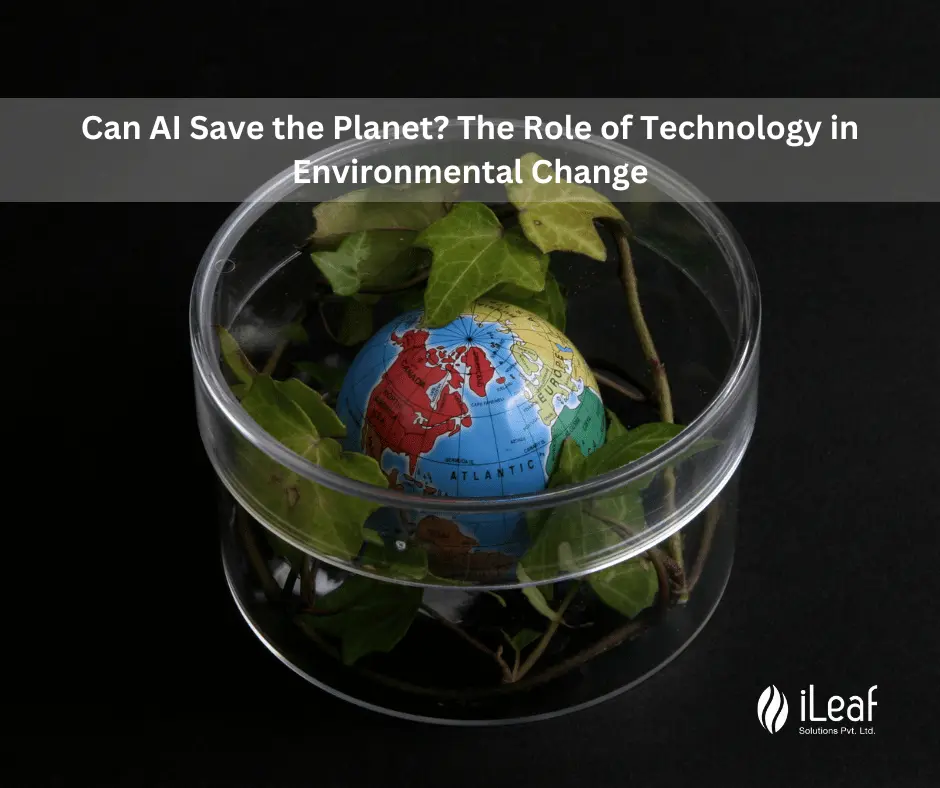AI and Environmental Change: What You Need to Know

Overview
- Introduction
- Understanding the Role of AI in Monitoring Environmental Changes
- AI's Contribution to Climate Change Mitigation
- Applications of AI in Addressing Environmental Challenges Beyond Climate Change
- Challenges and Future Outlook for AI in Environmental Monitoring
- Conclusion
Introduction
As the Earth groans under the weight of environmental challenges, our desperate cries for solutions echo across the globe. In this chorus of concern, a new voice is rising – the voice of artificial intelligence (AI). Can this technological prodigy, with its seemingly boundless capacities, become the hero we've been waiting for?
Understanding the Role of AI in Monitoring Environmental Changes
Imagine our planet as a complex puzzle, its pieces scattered across continents and oceans. Each fragment reflects a facet of its health – the changing air temperature, the ebb and flow of ocean currents, the verdant expanse of forests, and the fragile pulse of endangered species. Traditionally, deciphering this puzzle meant painstakingly collecting data through manual monitoring, a slow and often incomplete process. But here's where AI enters like a skilled puzzle solver, wielding its potent algorithms like magnifying glasses and laser pointers.
Imagine a vast satellite image, once an unintelligible blur, transformed by AI into a map pinpointing deforestation hotspots with surgical precision. Or, consider sensor data, a deluge of numbers, analyzed by AI to reveal subtle fluctuations in air quality, predicting smog events before they even begin. Even the whispers of the ocean are decoded by AI-powered underwater drones, their cameras capturing coral bleaching and mapping delicate ecosystems with unprecedented detail.
This data transformation is just the first act. AI doesn't merely gather information; it connects the dots, recognizing patterns and trends that human eyes might miss. It correlates temperature changes with forest fires, identifies illegal logging activities from satellite imagery, and even predicts animal migrations based on shifts in vegetation. This comprehensive understanding equips us to anticipate environmental threats, prioritize interventions, and track the effectiveness of our actions.
But AI's impact extends beyond observation. It's like a detective, uncovering hidden clues in the environment's data. By analyzing historical patterns and real-time trends, AI can identify the root causes of environmental degradation, whether it's inefficient agricultural practices contributing to soil erosion or the interplay of ocean currents and emissions causing marine heatwaves. This deeper understanding is the key to crafting targeted solutions, addressing the very source of the problem, not just treating the symptoms.
In essence, AI is revolutionizing environmental monitoring by acting as our planet's tireless observer, its skilled analyst, and its insightful investigator. This enhanced understanding is the foundation upon which we can build a more sustainable future, one puzzle piece at a time.
AI's Contribution to Climate Change Mitigation
Nowhere is AI's potential more evident than in the fight against climate change. AI-powered smart grids optimize energy distribution, reducing waste and making renewable energy sources more efficient. Meanwhile, sophisticated algorithms analyze weather patterns and energy consumption data to predict peak demand and prevent blackouts, further reducing reliance on fossil fuels.
But AI's impact goes beyond simply powering down. It can also optimize agriculture, a significant contributor to greenhouse gas emissions. AI-driven precision agriculture tools analyze soil conditions, optimize water usage, and recommend targeted pesticide application, minimizing environmental impact while maximizing food production.
Applications of AI in Addressing Environmental Challenges Beyond Climate Change
Climate change isn't the only environmental monster we face. AI is also helping us tackle air and water pollution. By analyzing sensor data from monitoring stations, AI algorithms can identify pollution hotspots and predict pollution events, allowing authorities to take timely preventive measures. Similarly, AI-powered robots are being deployed to clean up oil spills and hazardous waste sites, minimizing the damage to fragile ecosystems.
Beyond pollution, AI is playing a crucial role in biodiversity conservation. Automated image recognition algorithms can track endangered species populations, identify illegal poaching activities, and even predict wildlife habitat loss. This information is vital for informing conservation strategies and protecting our planet's precious biodiversity.
Challenges and Future Outlook for AI in Environmental Monitoring
While AI's potential is undeniable, its journey to becoming an environmental savior isn't without challenges. Issues of data privacy, algorithmic bias, and the carbon footprint of AI systems themselves need careful consideration and responsible development. Furthermore, ensuring equitable access to and application of AI technology for environmental solutions is crucial to avoid exacerbating existing environmental inequalities.
However, the future of AI in environmental monitoring is undoubtedly bright. Continued advancements in AI capabilities, coupled with responsible development and ethical considerations, can unlock further applications and propel us towards a more sustainable future. Imagine AI-powered drones planting trees in deforested areas, robots cleaning up plastic pollution from our oceans, and AI algorithms informing international environmental policies based on real-time data analysis. The possibilities are endless.
Conclusion
So, can AI save the planet? The answer is neither a resounding yes nor a definitive no. AI is a powerful tool, but it's just that – a tool. True environmental salvation lies in human action, informed by and empowered by the insights AI provides. We must wield this technological marvel responsibly, with a collective desire for a sustainable future. Only then can AI truly play its part in our journey towards a healthier planet for generations to come.














